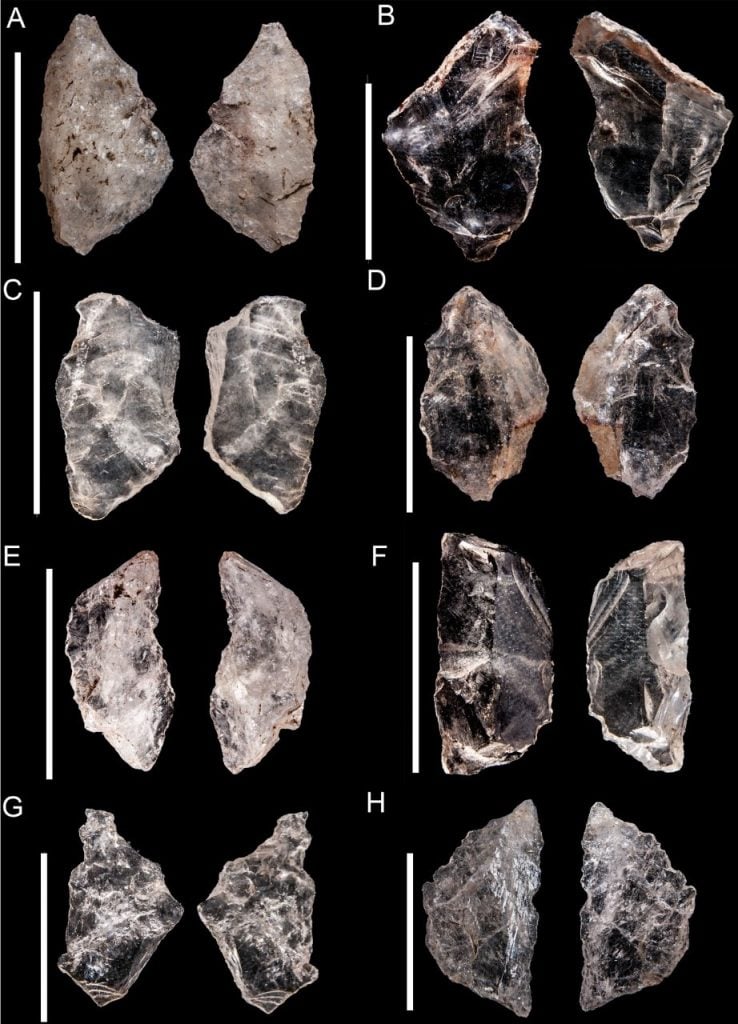Archaeology & History
Remarkably Similar Stone Age ‘Swiss Army Knives’ Found Across Africa Suggest a System of Prehistoric Mass Communication
Across wide distances, it appears that ancient humans used the same template to make their tools.

Across wide distances, it appears that ancient humans used the same template to make their tools.

Sarah Cascone

The discovery in southern Africa of numerous ancient “Swiss Army” knives made from stone, all seemingly the same design, suggests widespread communication across the continent an astonishing 65,000 years ago, researchers argue in a new report.
The tools, which appear to have been fashioned in the same way on different sides of the continent, may even have been crafted from a shared template.
“While the making of the stone tool was not particularly difficult, the hafting of the stone to the handle through the use of glue and adhesives was, which highlights that they were sharing and communicating complex information with each other,” Paloma de la Peña, a senior research associate at Cambridge University’s McDonald Institute for Archaeological Research, said in a statement.
This week, an international team led by University of Sydney archaeologist Amy Way, who also runs the Australian Museum in Sydney, published a study on these prehistoric long-distance social ties in the journal Scientific Reports.
Researchers found an enormous number of these stone tools, referred to as Howiesons Poort blades, which were used for cutting, drilling, skinning, and other tasks.
Altogether, it’s the first evidence of modern homo sapiens communicating with each other across large geographic distances, maintaining social connections and sharing knowledge, despite living far apart.
“The really exciting thing about this find is that it gives us evidence that there was long-distance social connection between people, just before the big migration out of Africa, which involved all of our ancestors,” Way said.
Although earlier groups of humans left Africa for Europe, migrations to the continent were not successful until 60,000 to 70,000 years ago—and it may have been stronger social ties that allowed communities of prehistoric people to continue to flourish as they moved across the globe.
“The main theory as to why modern humans replaced all the other humans living outside Africa around 60,000 70,000 years ago,” de la Peña told the Guardian, “is that our ancestors were much better at social networking than the other species, such as Neanderthals, who were possibly smarter and stronger as individuals, but not great at sharing information.”